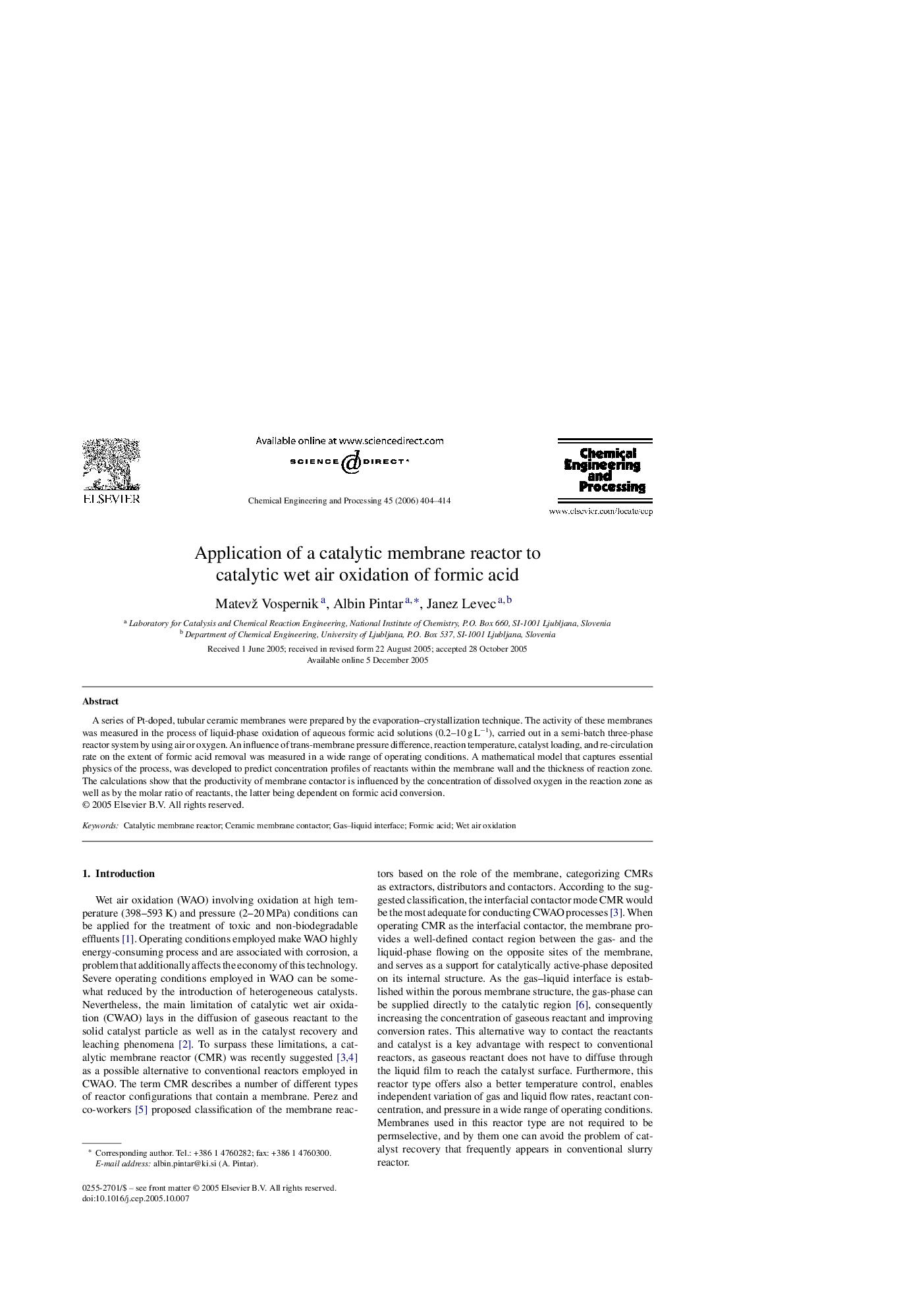| Article ID | Journal | Published Year | Pages | File Type |
|---|---|---|---|---|
| 688606 | Chemical Engineering and Processing: Process Intensification | 2006 | 11 Pages |
A series of Pt-doped, tubular ceramic membranes were prepared by the evaporation–crystallization technique. The activity of these membranes was measured in the process of liquid-phase oxidation of aqueous formic acid solutions (0.2–10 g L−1), carried out in a semi-batch three-phase reactor system by using air or oxygen. An influence of trans-membrane pressure difference, reaction temperature, catalyst loading, and re-circulation rate on the extent of formic acid removal was measured in a wide range of operating conditions. A mathematical model that captures essential physics of the process, was developed to predict concentration profiles of reactants within the membrane wall and the thickness of reaction zone. The calculations show that the productivity of membrane contactor is influenced by the concentration of dissolved oxygen in the reaction zone as well as by the molar ratio of reactants, the latter being dependent on formic acid conversion.
